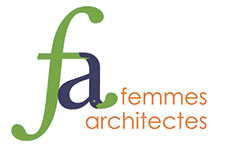La Folie Divine
La Folie Divine is the first of two apartment buildings, described as ‘folies’, which have been commissioned by the City of Montpellier in the eighteenth century tradition of grand mansions surrounded by gardens. The nine-storey tower redefines the notion of luxury through offering privacy and flexibility. Its compact footprint frees up surrounding land to become a landscaped setting.
The tranquil site is located on Îlot M2 within Les Jardins de la Lironde, an urban development on the periphery of Montpellier masterplanned by Christian de Portzamparcon. To the west it borders a river and to the north, east and west, residential neighbourhoods. The City’s brief was the opportunity to ask how the playful character of a folie, with precedents such as the castles of Flaugergues, de la Mogère and de la Mosson, could be a critical tool for generating a new type of residential architecture. In both French and English gardens the idea of a folie is a playful structure with no practical purpose, that would be placed within a garden or landscape to elicit pleasure, luxury and wealth. As a typology the folie therefore plays with an idea that goes beyond mere practicality.
The brief requested five different apartment types. However La Folie Divine, through its unique assembly of floor plates, balconies and structure, provides residents with 36 apartment types. Its architecture challenges the typical notion of residential luxury as synonymous with the use of expensive materials. Instead it redefines luxury in three ways: by providing a variety of spatial choices to compliment lifestyles; by giving the flexibility to modify the interior as and when required, and thirdly, by offering the freedom to enjoy both interior and exterior spaces in utmost privacy.
The building is designed as a 9-storey tower (the maximum height permitted by the masterplan for the area) in order to minimise the footprint and provide views of the sea as well as the city centre in the distance. Its compact footprint also allows the rest of the site to be used for a garden and creates corner apartments which benefit from two aspects and natural cross-ventilation. To minimise the need for building maintenance the envelope is clad in corrugated anodised aluminium metal panelling and glass, while hardwood flooring is used for the balconies.
To provide residents with the option of sub-dividing their apartments to suit their lifestyle, the structure of the building is located along the vertical core. This frees up the interior space and empowers residents to reconfigure their interiors at their own pace. The first owners have already customised their internal wall placements, and each apartment has consequently acquired a unique layout. Two apartments were purchased by one family and combined into a single home.
To enable indoor/outdoor living, all apartments are designed with curvilinear balconies that taper at each end and obviate the need for balcony dividing walls between neighbours, which typically obstruct lateral views. The curvilinear balconies are strategically located so that each one enjoys 180 degree views but never looks into the neighbouring balcony. There are four different floor configurations, each with differing balcony locations stacked in alternating order to ensure that neighbouring balconies are two levels apart from each other. This minimises downward views from one neighbour to another and creates the choice of two balcony types throughout the building: a single height balcony, shaded by the level above and designed with exterior curtains for additional privacy and wind protection, and a double height balcony which benefits from maximum sun exposure and provides the possibility of maintaining taller house plants.
To reinforce privacy, the balcony handrails are designed with double points of support to provide views out and minimise views in by creating a moiré-like pattern when viewed at an oblique. The unusual degree of privacy and choice created by the shape and location of balconies, as well as the moiré handrails and exterior curtains, encourage residents to adopt an indoor/outdoor mode of living. One resident has even requested his balcony structure to be reinforced so that he can install a jacuzzi, suggesting that the balconies are being used as an extension of the interior.

